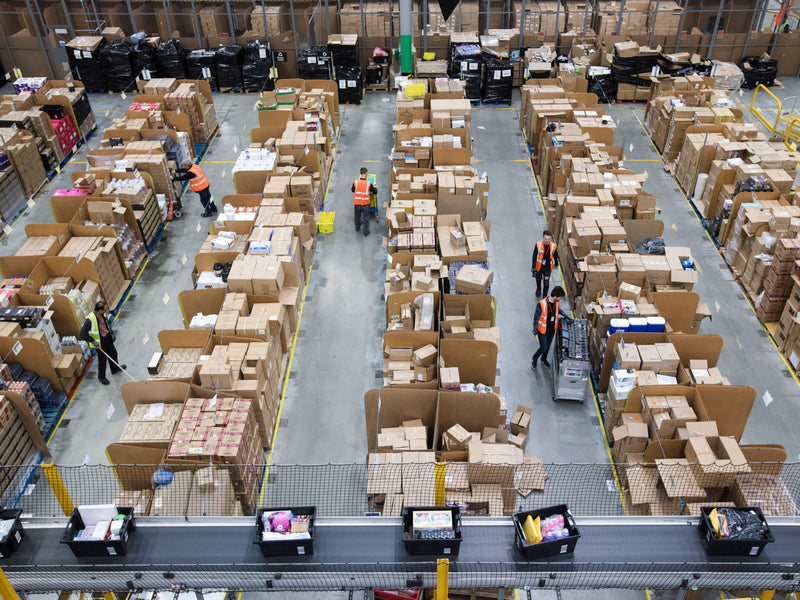Selecting a fulfilment partner is one of the highest-impact decisions an eCommerce leadership team will make. The right partner unlocks lower landed costs, delivers near-perfect customer experience, and provides the operational headroom to launch new markets with confidence. The wrong one drags margins into the red, erodes customer trust, and forces expensive mid-contract migrations.
At eComplete we have audited, selected, and managed dozens of fulfilment providers while operating our own brands. That lived experience shapes how we evaluate partners today. We look beyond headline pick-and-pack rates and study the entire service stack: inbound compliance, system flexibility, returns handling, and contractual levers that protect margin. This guide distils those lessons into a practical checklist you can apply before signing your next 3PL agreement.
Start With Your Business Model, Not a Rate Card
A spreadsheet comparison of pick-and-pack fees tells you nothing about whether a warehouse can support your customer journey. Begin with a requirements brief that mirrors your business model and growth plan.
-
High return categories such as fashion see rates above 20 percent in the UK according to recent data from Statista https://www.statista.com/. That means your provider must handle inspection, grading, and rapid resale.
-
Subscription or bundle brands need kitting stations and cycle-based labour planning.
-
Multi-channel sellers require the ability to ship B2B cartons and D2C parcels from the same stock pool without double handling.
-
Planning an EU or US launch within 18 months? Confirm your partner already operates bonded or tax-efficient sites and can integrate with the customs platforms recommended in the UK government’s export guide https://www.gov.uk/government/collections/exporting.
Operator tip: share twelve months of order data, marketing calendars, and new-SKU roadmaps during tender so candidates model real labour and storage peaks.
Ask Questions That Expose Capability, Not Confidence
Every 3PL salesperson claims fast turnaround and 99 percent accuracy. Drill into the evidence.
-
Request the last three months of SLA reports, not a marketing slide. Cross-check order accuracy, same-day despatch, and courier on-time percentages. The McKinsey & Company logistics benchmarks offer a useful yardstick for best-in-class metrics https://www.mckinsey.com/.
-
Insist on a live WMS demo. Walk through inbound ASN booking, real-time stock queries, and multichannel order routing.
-
Validate contingency planning. Ask how the warehouse maintained service during the parcel hub disruptions documented by BBC News in late 2024 https://www.bbc.co.uk/news/business.
-
Probe staff training. If your SKU mix is fragile or regulated, confirm handlers hold the relevant certifications (for example COSHH for cosmetics).
Operator tip: speak to two current clients whose order profile resembles yours. Off-record conversations reveal more than polished case studies.
Use Commercial Levers That Protect Margin Over Time
Even the best-fit warehouse can hurt profit if the contract allows unchecked fee creep. Align incentives and set clear boundaries.
-
Storage: negotiate free days for campaign overstock and cap long-term fees as a percentage of total pallets.
-
Surcharges: list every potential add-on in a schedule. Benchmark fuel levies against the UK Government’s weekly diesel index https://www.gov.uk/government/statistics/weekly-road-fuel-prices and agree a maximum.
-
Returns: confirm per-unit processing, relabelling, and disposal costs. According to the KPMG retail returns study, UK merchants lose close to £20 billion annually in returns-related write-offs https://kpmg.com/uk. Accurate fees keep this under control.
-
Volume flexibility: growth rarely follows a straight line. Build clauses that let you flex order bands up or down without punitive penalties for under-performance.
-
Exit planning: include SLA-linked termination rights and clear data hand-back obligations so a move, if required, takes weeks not months.
Operator tip: revisit the contract annually. Use your own demand data plus independent courier market indices to renegotiate where cost-to-serve has diverged from original assumptions.
Conclusion: A Partner, Not Just a Provider
A fulfilment partner should extend your brand promise, not simply shift boxes. When evaluation starts with your customer journey, digs into real capability, and is locked down with protective commercial terms, logistics becomes a growth asset rather than an afterthought.
Brands that follow this process routinely see higher customer satisfaction, smoother international launches, and margins that improve over time instead of eroding. If your current warehouse cannot answer the questions above, or if hidden fees appear each month, it may be time to explore a better fit.
eComplete combines operator experience with a data-driven tender process to match brands with fulfilment partners that grow alongside them. We benchmark every line item, negotiate collective-volume savings, and oversee implementation so you can focus on trading, not troubleshooting.
Ready to find out whether your current setup can carry you through the next stage of growth? Let’s talk.



